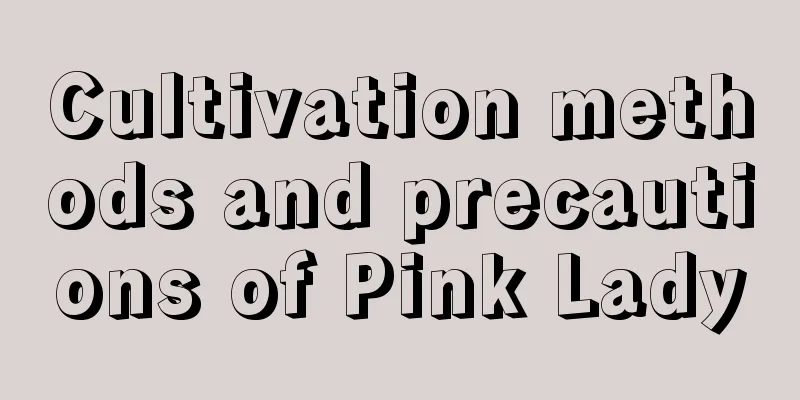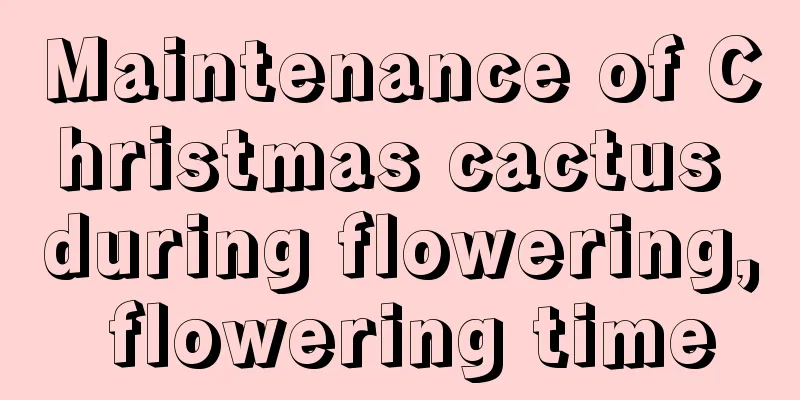Cultivation methods and precautions of Pink Lady

1. Maintenance methods1. Temperature: The temperature in summer is relatively high, so it needs to be controlled. It is best to keep it below 30 degrees. The temperature in winter is relatively low, and the plants are not resistant to low temperatures. If the temperature is below five degrees, they will be frostbitten. It is more reasonable to control the temperature above ten degrees to survive the winter. 2. Watering: It consumes a lot of water during the growing period, so it needs to increase the amount of water appropriately. It is best to water it every other day. It does not need too much water during the non-growing period, and watering it once every two or three days is enough. It needs to be watered once before wintering, so that it can survive the winter smoothly. 3. Fertilization: It has a relatively large demand for nutrients, especially during the growth period. The nutrients in the soil alone are not enough. It needs to be fertilized once a month. It is best to use special fertilizers for succulents or compound fertilizers. These two types of fertilizers have more comprehensive nutrients and are more suitable for Red Pink Lady. 4. Light: It will change color with different lighting time. If the light is less, its color will be green. If the light time is more, its color will turn red. In order to ensure its normal needs, the daily lighting time should not be less than five hours. 2. Breeding techniques1. Reproduction: It can be propagated by cuttings. First, cut healthy branches from the plant, then insert them into a substrate with good drainage and place them in a cool place for maintenance. It will take about twenty days for roots to grow. 2. Pruning: Generally, pruning is not required. It only needs to be pruned appropriately when its growth affects its appearance. 3. Problem Diagnosis1. Yellowing leaves: The yellowing of the leaves is mostly caused by excessive watering, which leads to poor breathing of the roots. The soil needs to be changed. When changing the soil, trim off the branches with rotten roots. 2. Leaf drooping: If the plant has leaf drooping problem, it may be caused by excessive light. You need to put it in a cool place for a few days, and then control the light, mainly using diffuse light to solve this problem. IV. Other issues1. Edibility: It cannot be eaten directly. In addition to being ornamental, it can also purify the air. 2. Can it be cultivated at home? The plant is not tall and has fewer requirements for the maintenance environment, so it is more suitable for indoor cultivation. |
<<: Breeding methods and precautions for black rabbit ears
>>: Cultivation methods and precautions of Sichuan pepper
Recommend
How to plant star anise seeds
Star anise seed planting time Star anise seeds ar...
Can Jerusalem artichoke seedlings be transplanted?
Can Jerusalem artichoke seedlings be transplanted...
The difference between Zinnia and Zinnia
The difference between Zinnia and Zinnia Basic Di...
How to eat Cordyceps sinensis best (how to eat and how much to use)
1. How to eat 1. Grind into powder: The most comm...
These flowers will survive with just a little water! It’s no hassle at all! Why don't you raise it quickly?
Hoya Hydroponic method: Select healthy branches, ...
How to grow the succulent winter beauty
Winter Beauty Growth Conditions Winter beauty has...
How to maintain Katu Red Sword
How to maintain Katu Red Sword Katu Red Sword lik...
What are the benefits of eating blueberries? Can the skin of blueberries be eaten?
1. What are the benefits 1. Improve vision: It co...
How to fertilize banyan trees?
Fertilization principles Apply thin fertilizer fr...
How to deal with waterlogging and root rot? How long does it take for waterlogging in the soil to cause root rot?
1. Causes of waterlogging and root rot 1. Water a...
What to do if Chlorophytum comosum does not bloom
Reasons for not blooming and how to deal with it ...
How to prune hibiscus and what to pay attention to
Hibiscus pruning time Hibiscus should be pruned t...
What flowers are suitable for growing in Handan? What are the city flowers and trees?
1. Climate characteristics of Handan Handan has a...
How to grow Sansevieria truncatum
1. Maintain good lighting It has very strong adap...
What to do if roses do not produce new branches and grow slowly (make roses grow more branches quickly)
How to make a slow-growing rose sprout new branch...









